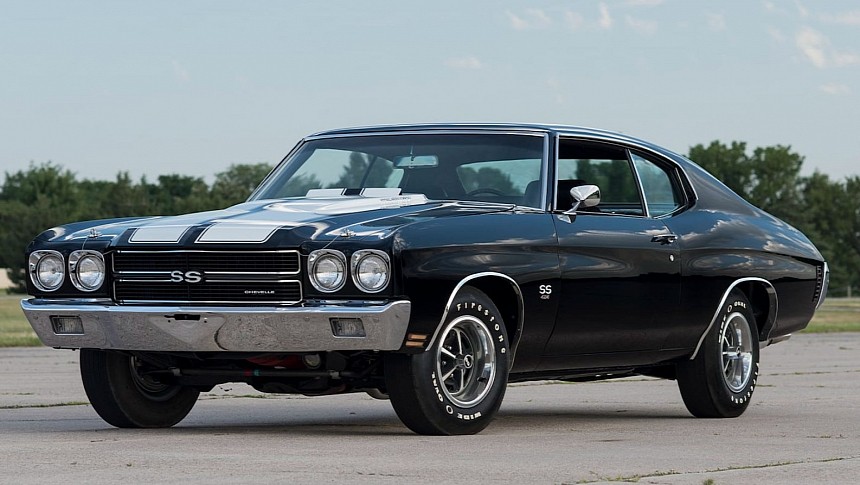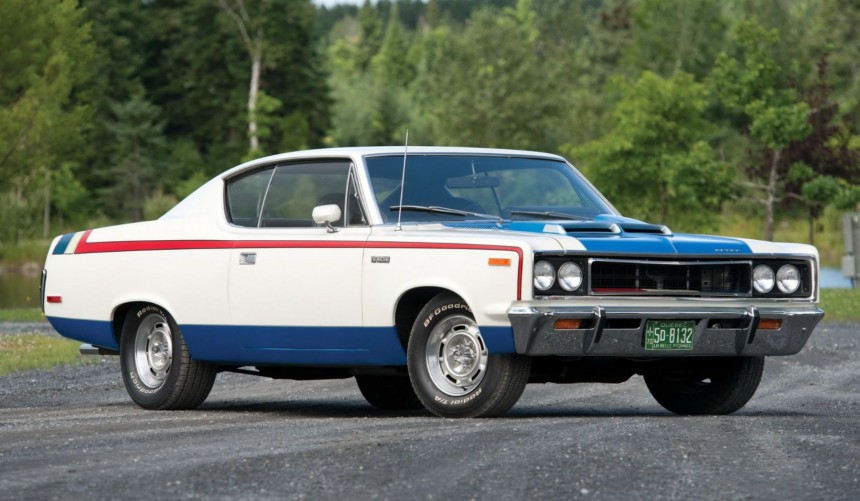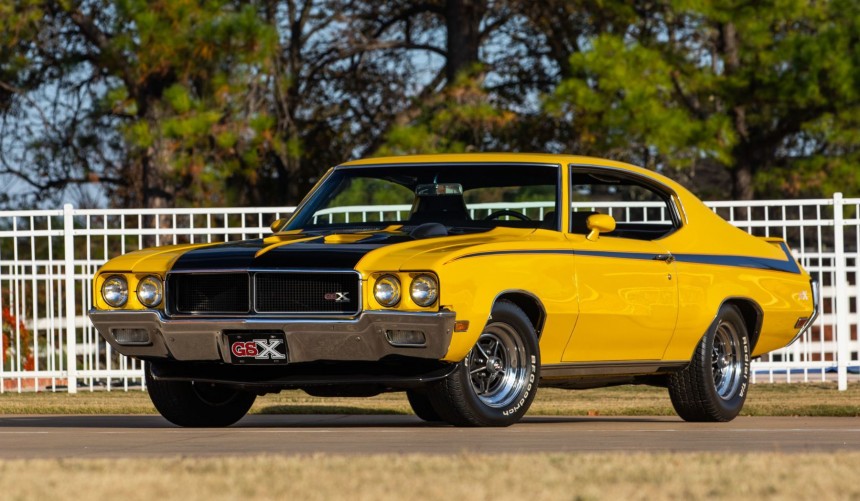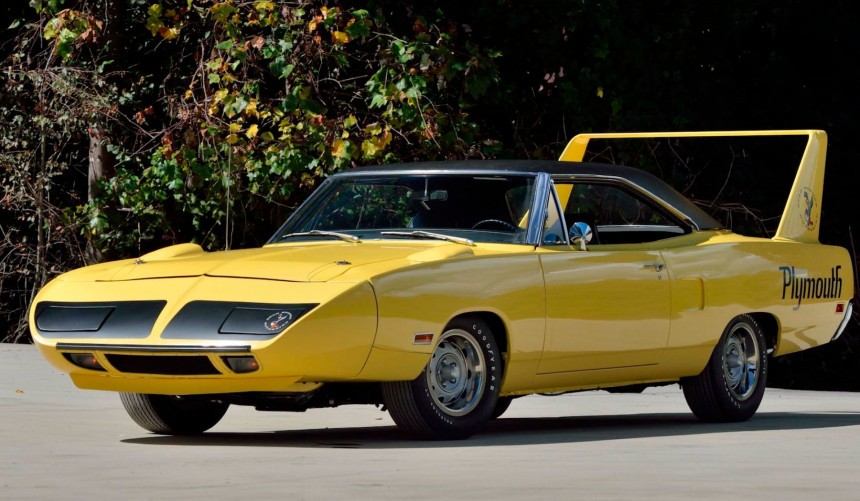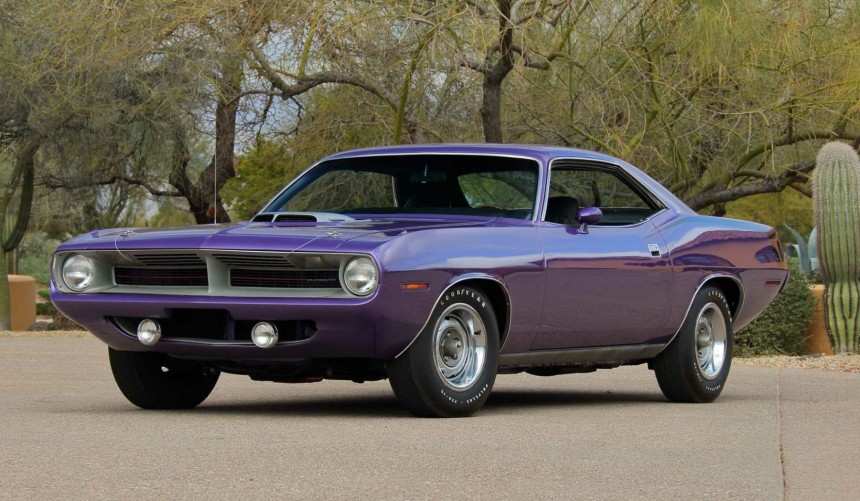For muscle car enthusiasts, 1970 was the model year when some of the most legendary high-performance tire-shredders were unleashed on public roads.
The golden age of muscle cars started in the first part of the 1960s when drag racing (of both legal and less legal varieties) was growing in popularity.
This growing trend persuaded carmakers to transplant bigger, more powerful V8s from their full-size offerings in smaller and lighter intermediates.
By 1970, the muscle car era reached its peak in terms of performance and variety of performance models.
However, with Congress passing the first Clean Air Act, requiring a 90% reduction in emissions of new vehicles by 1975, the muscle car era abruptly ended. From 1971 onwards, these phenomenal cars saw a drop in performance and gradually disappeared.
Consequently, 1970 became the most epic model year for muscle car and their enthusiasts, as it saw the introduction of American tire-shredding legends like the five models featured in this article.
The American Motors Corporation (AMC) managed to survive in a market dominated by Detroit's Big Three, even if it didn't have comparable resources.
Though the performance segment was not initially part of the company's plans, the rise in popularity and sales of muscle cars drove AMC to adjust.
The company's first thoroughbred muscle car was the 1969 S/C Rambler, co-developed with Hurst, which gained nothing but praise after its release.
Encouraged by the Scrambler's success, AMC and Hurst developed a worthy successor that was only available during the 1970 model year.
Initially sold only in a patriotic paint scheme, the new high-performance Rebel dubbed "The Machine" was powered by a 390-ci (6.4-liter) rated at 340 hp and 430 lb-ft (583 Nm) of torque.
Additionally, it featured a standard four-speed manual (or an optional three-speed auto), a large hood scoop with an integrated tach, power front disc brakes, beefed up suspension, a 3.54:1 limited-slip diff, and unique Machine wheels wrapped in Goodyear Polyglas tires.
Capable of running the quarter mile in 14.4 seconds, The Machine was produced in 2,326 units.
The Grand Sport models were Buick's intermediate offerings for performance enthusiasts who also wanted a touch of luxury.
However, after GM lifted its notorious 400-ci (6.5-liter) displacement limit on intermediate models for 1970, the division decided to introduce the most potent GS to date.
Made available to the public mid-model year, the GSX was available in only two base colors (Saturn Yellow and Apollo White) contrasted by a black stripe decal package.
It also featured front and rear spoilers, a Rallye steering wheel, bucket seats, power front disc brakes, a sturdier suspension, or a posi limited-slip diff - among other goodies.
Under the hood, the GSX came with the standard 350-hp 455-ci (7.5-liter) V8 or the 360-hp version as part of the optional Stage 1 package.
In either case, the engine sent 510 lb-ft (691 Nm) of twist to the rear wheels - more than any other American production engine developed before the Viper's V10.
Buick only made 678 GSXs in 1970, with 479 featuring the Stage 1 package and 199 standard 455-powered units.
In terms of quarter-mile performance, the GSX Stage 1 could cross the finish line from a standstill in 13.7 seconds.
In 1969, Ford pried NASCAR legend Richard Petty away from Plymouth with their new Torino Talladega aero car. Adding insult to injury, Petty won the title, embarrassing Plymouth and Chrysler siblings Dodge, who tried to stop Ford with their brand-new Charger Daytona.
For the 1970 season, Plymouth decided to further develop the Daytona, which led to the development of the Superbird.
While the race version convinced Petty to return and brought him another title, the street-legal homologation variant became one of the most legendary muscle cars ever produced.
As standard, the Belvedere-based Superbird was powered by a 375-hp, four-barrel 440-ci (7.2-liter) Super Commando V8, while the two available options were a 390-hp six-barrel 440 or the mighty 426 HEMI, conservatively rated at 425 hp.
Equipped with the 6.9-liter Elephant engine, the Superbird ran the quarter mile in 14.26 seconds, which wasn't particularly impressive for the latest aero car.
Plymouth produced 1,935 Superbirds in 1970 (not an official, but generally accepted figure), of which an estimated 135 hid the HEMI under their hoods.
Apart from introducing the NASCAR-bound Superbird, Plymouth also redesigned its Barracuda pony car for the 1970 model year.
With its attractive Coke bottle styling, the new body received a larger engine bay meant to better accommodate Chrysler's big blocks.
Like the previous generation, the 'Cuda was available with a wide range of options, but the most sought-after was the HEMI, which, apart from the engine, added unique, blacked-out side decals, a shaker hood, and other performance-oriented features.
According to an independent test conducted by Car Craft magazine in the fall of 1969, the 1970 HEMI 'Cuda could run the quarter mile in 13.10. However, on the streets or the strip, a bone-stock HEMI 'Cuda could rarely replicate the feat.
Plymouth delivered 652 coupe-bodied HEMI 'Cudas in 1970 and only 14 convertibles. Surviving models are extremely expensive today, with the convertibles going for seven figures.
The 1970 model year was the most exciting in the history of the Chevelle nameplate.
Not only did it receive a thorough redesign, but with the aforementioned displacement limit lifted, two insanely powerful 454-ci (7.4-liter) V8s were added to the Super Sport trim.
Like Buick's GS, the SS was the high-performance trim of most Chevrolet models, such as the Camaro, Impala, Monte Carlo, El Camino, or Chevelle.
For the brand-new 1970 Chevelle, the two SS options (RPO Z25 or RPO Z15) added a bunch of performance-oriented components like power-front disc brakes, heavy-duty suspension, a power dome striped hood, or a black-accented grille.
When equipped with the Z15 option, the SS received either the standard 454 Turbo-Jet V8 rated at 360 hp or the optional LS6.
The latter 454 was based on the same block but featured many upgrades that bumped output to a massive 450 hp and 500 lb-ft (678 Nm) of torque.
When equipped with this engine, the 1970 Chevelle SS could constantly run the quarter mile in 13.10 seconds. On multiple occasions, it was able to beat the 1970 HEMI Cuda with a skilled driver behind the wheel.
During the 1970 model year, Chevy built 4,475 cars with the LS6 engine, but no official figures indicate how many were Chevelles.
This growing trend persuaded carmakers to transplant bigger, more powerful V8s from their full-size offerings in smaller and lighter intermediates.
By 1970, the muscle car era reached its peak in terms of performance and variety of performance models.
However, with Congress passing the first Clean Air Act, requiring a 90% reduction in emissions of new vehicles by 1975, the muscle car era abruptly ended. From 1971 onwards, these phenomenal cars saw a drop in performance and gradually disappeared.
Consequently, 1970 became the most epic model year for muscle car and their enthusiasts, as it saw the introduction of American tire-shredding legends like the five models featured in this article.
AMC Rebel "The Machine"
Though the performance segment was not initially part of the company's plans, the rise in popularity and sales of muscle cars drove AMC to adjust.
The company's first thoroughbred muscle car was the 1969 S/C Rambler, co-developed with Hurst, which gained nothing but praise after its release.
Encouraged by the Scrambler's success, AMC and Hurst developed a worthy successor that was only available during the 1970 model year.
Initially sold only in a patriotic paint scheme, the new high-performance Rebel dubbed "The Machine" was powered by a 390-ci (6.4-liter) rated at 340 hp and 430 lb-ft (583 Nm) of torque.
Additionally, it featured a standard four-speed manual (or an optional three-speed auto), a large hood scoop with an integrated tach, power front disc brakes, beefed up suspension, a 3.54:1 limited-slip diff, and unique Machine wheels wrapped in Goodyear Polyglas tires.
Capable of running the quarter mile in 14.4 seconds, The Machine was produced in 2,326 units.
Buick GSX Stage 1 455
However, after GM lifted its notorious 400-ci (6.5-liter) displacement limit on intermediate models for 1970, the division decided to introduce the most potent GS to date.
Made available to the public mid-model year, the GSX was available in only two base colors (Saturn Yellow and Apollo White) contrasted by a black stripe decal package.
It also featured front and rear spoilers, a Rallye steering wheel, bucket seats, power front disc brakes, a sturdier suspension, or a posi limited-slip diff - among other goodies.
Under the hood, the GSX came with the standard 350-hp 455-ci (7.5-liter) V8 or the 360-hp version as part of the optional Stage 1 package.
In either case, the engine sent 510 lb-ft (691 Nm) of twist to the rear wheels - more than any other American production engine developed before the Viper's V10.
Buick only made 678 GSXs in 1970, with 479 featuring the Stage 1 package and 199 standard 455-powered units.
In terms of quarter-mile performance, the GSX Stage 1 could cross the finish line from a standstill in 13.7 seconds.
Plymouth Superbird HEMI
For the 1970 season, Plymouth decided to further develop the Daytona, which led to the development of the Superbird.
While the race version convinced Petty to return and brought him another title, the street-legal homologation variant became one of the most legendary muscle cars ever produced.
As standard, the Belvedere-based Superbird was powered by a 375-hp, four-barrel 440-ci (7.2-liter) Super Commando V8, while the two available options were a 390-hp six-barrel 440 or the mighty 426 HEMI, conservatively rated at 425 hp.
Equipped with the 6.9-liter Elephant engine, the Superbird ran the quarter mile in 14.26 seconds, which wasn't particularly impressive for the latest aero car.
Plymouth produced 1,935 Superbirds in 1970 (not an official, but generally accepted figure), of which an estimated 135 hid the HEMI under their hoods.
Plymouth HEMI 'Cuda
With its attractive Coke bottle styling, the new body received a larger engine bay meant to better accommodate Chrysler's big blocks.
Like the previous generation, the 'Cuda was available with a wide range of options, but the most sought-after was the HEMI, which, apart from the engine, added unique, blacked-out side decals, a shaker hood, and other performance-oriented features.
According to an independent test conducted by Car Craft magazine in the fall of 1969, the 1970 HEMI 'Cuda could run the quarter mile in 13.10. However, on the streets or the strip, a bone-stock HEMI 'Cuda could rarely replicate the feat.
Plymouth delivered 652 coupe-bodied HEMI 'Cudas in 1970 and only 14 convertibles. Surviving models are extremely expensive today, with the convertibles going for seven figures.
Chevrolet Chevelle SS 454 LS6
Not only did it receive a thorough redesign, but with the aforementioned displacement limit lifted, two insanely powerful 454-ci (7.4-liter) V8s were added to the Super Sport trim.
Like Buick's GS, the SS was the high-performance trim of most Chevrolet models, such as the Camaro, Impala, Monte Carlo, El Camino, or Chevelle.
For the brand-new 1970 Chevelle, the two SS options (RPO Z25 or RPO Z15) added a bunch of performance-oriented components like power-front disc brakes, heavy-duty suspension, a power dome striped hood, or a black-accented grille.
When equipped with the Z15 option, the SS received either the standard 454 Turbo-Jet V8 rated at 360 hp or the optional LS6.
The latter 454 was based on the same block but featured many upgrades that bumped output to a massive 450 hp and 500 lb-ft (678 Nm) of torque.
When equipped with this engine, the 1970 Chevelle SS could constantly run the quarter mile in 13.10 seconds. On multiple occasions, it was able to beat the 1970 HEMI Cuda with a skilled driver behind the wheel.
During the 1970 model year, Chevy built 4,475 cars with the LS6 engine, but no official figures indicate how many were Chevelles.
